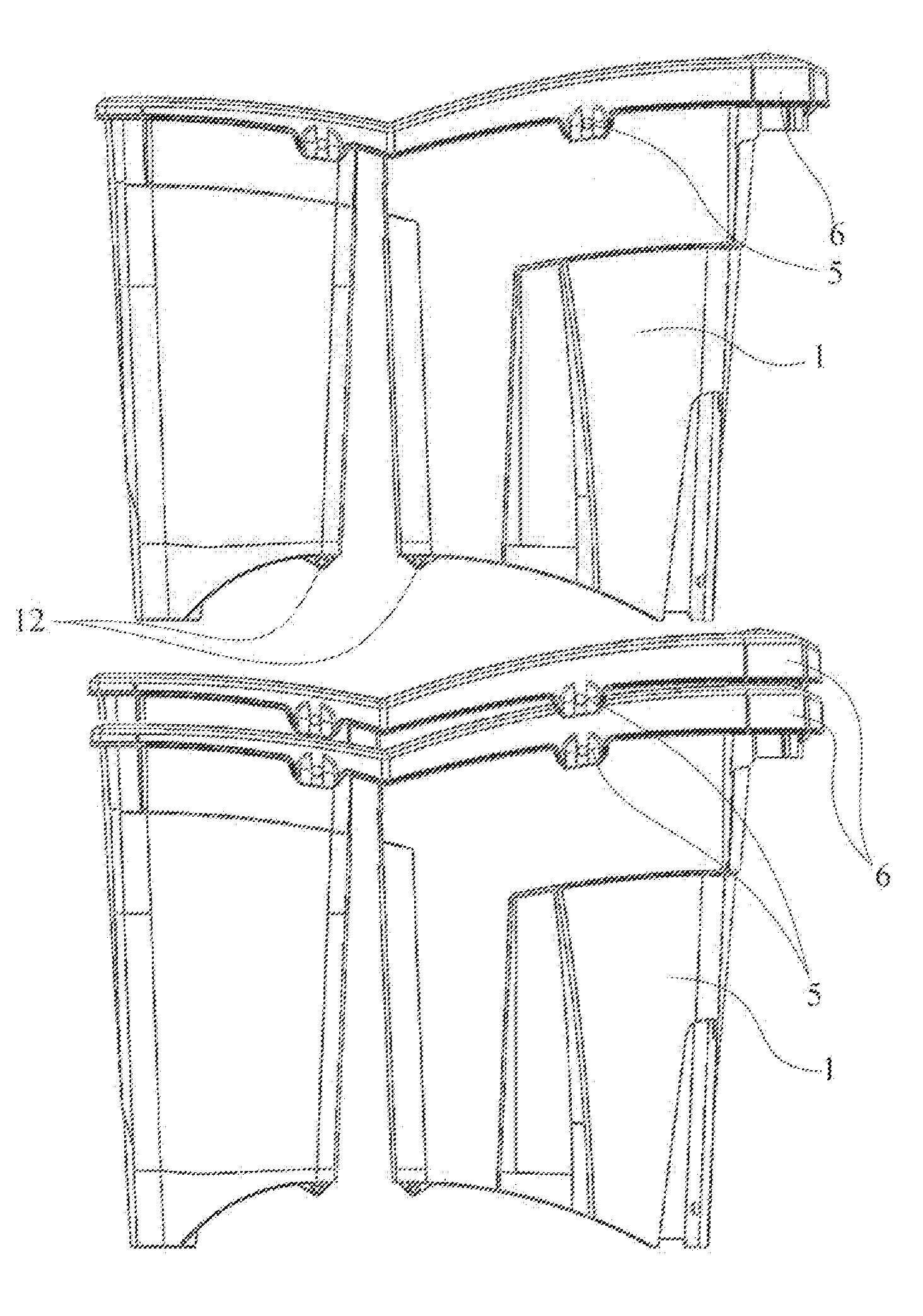Stackable cleaning bucket
a cleaning bucket and stacking technology, applied in the field of containers, can solve the problems of difficult to keep the bucket clean, accumulate dirt, and be very taxing, and achieve the effect of small cross-section
- Summary
- Abstract
- Description
- Claims
- Application Information
AI Technical Summary
Benefits of technology
Problems solved by technology
Method used
Image
Examples
Embodiment Construction
[0050]With reference to the drawings, the cleaning bucket 1 that is shown is a wheeled cleaning bucket, namely one with wheels 2, applied on the bottom to side expansions 3 (or side extensions) which can be removed from the structure of the bucket 1.
[0051]Said bucket has handles 4, whose housings 5 are near the edge 6 of the bucket 1.
[0052]This bucket has two compartments 7, 8 divided by a partition 9.
[0053]This partition 9 is composed of two walls 10, 11 joined only at the top and each part of the side surface of the respective compartment 7, 8.
[0054]At the bottom of the bucket, near the bottom edge of each compartment that faces the adjacent compartment there are the housings 12 into which the spacer elements 13 are inserted.
[0055]In this specific case, the housings 12 are holes with a circular section inside which the C-shaped spacer elements 13 are pushed.
[0056]In order to prevent an accidental uncoupling of the elements 13 from their housings, there is a no-return mechanism 14....
PUM
 Login to View More
Login to View More Abstract
Description
Claims
Application Information
 Login to View More
Login to View More - R&D
- Intellectual Property
- Life Sciences
- Materials
- Tech Scout
- Unparalleled Data Quality
- Higher Quality Content
- 60% Fewer Hallucinations
Browse by: Latest US Patents, China's latest patents, Technical Efficacy Thesaurus, Application Domain, Technology Topic, Popular Technical Reports.
© 2025 PatSnap. All rights reserved.Legal|Privacy policy|Modern Slavery Act Transparency Statement|Sitemap|About US| Contact US: help@patsnap.com



